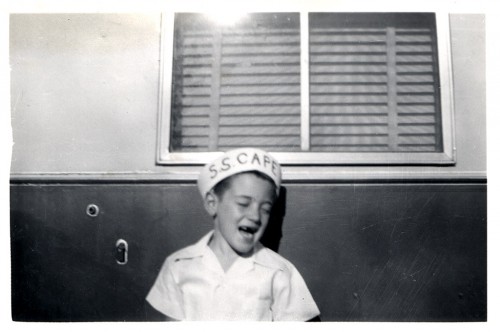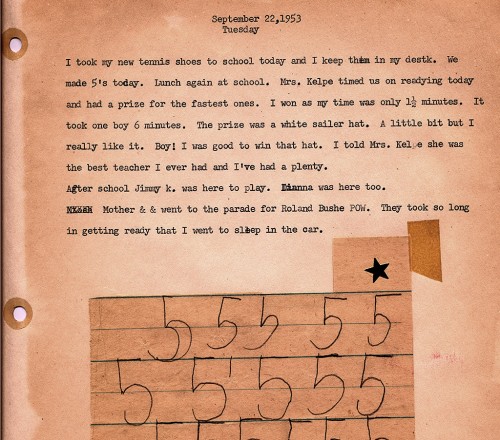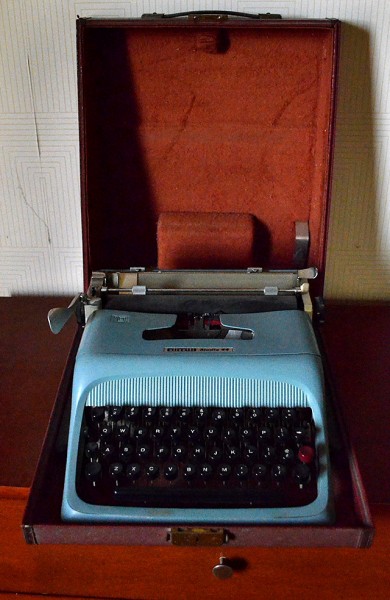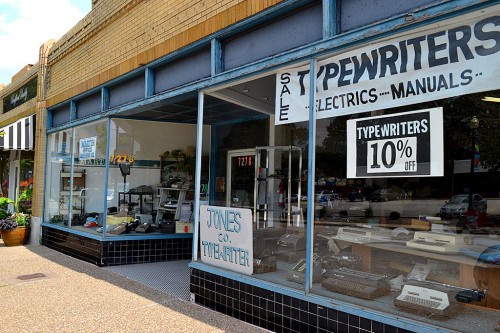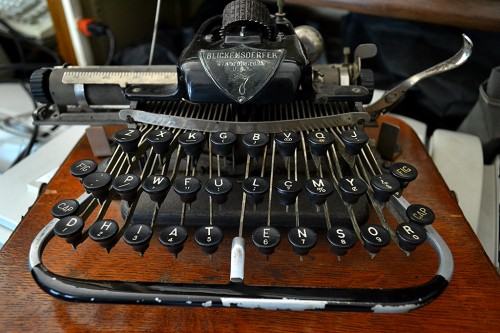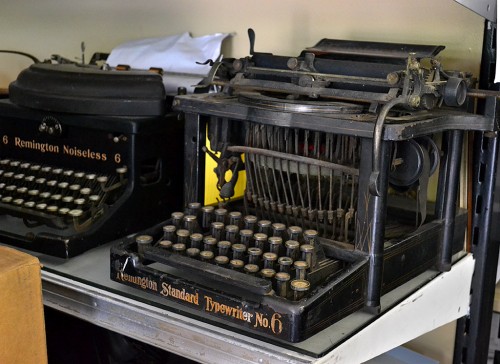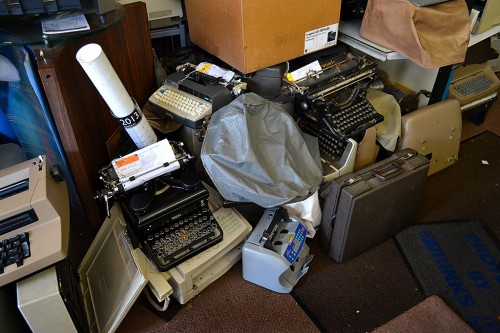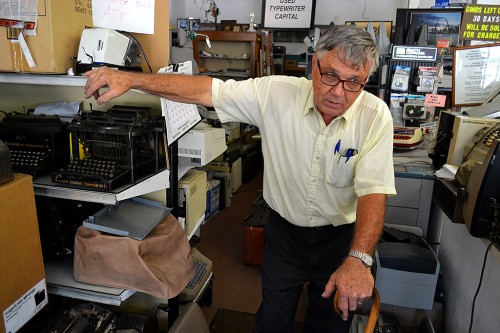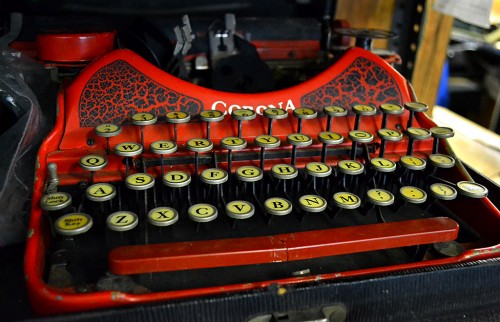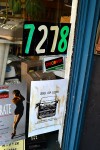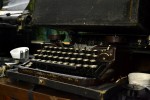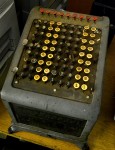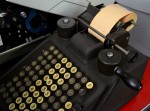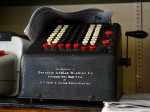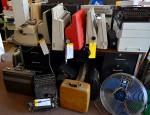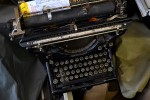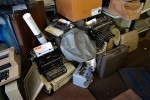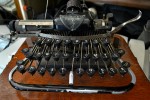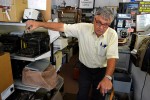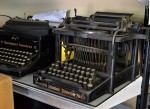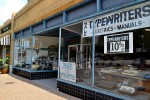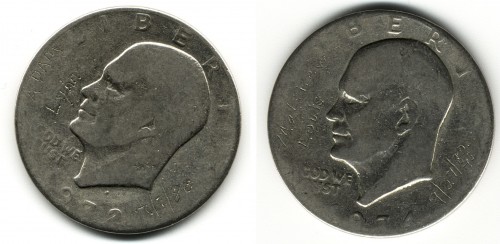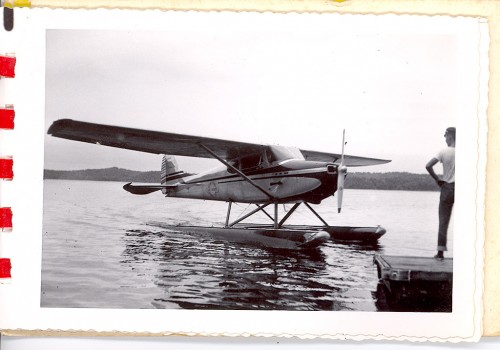 This tiny scrapbook looks like it captured my first plane ride when I was about four years old. Lake of the Ozarks kept twitching in the back of my mind. Then, I thought “Bagnell Dam,” not knowing for sure if the two phrases were connected.
This tiny scrapbook looks like it captured my first plane ride when I was about four years old. Lake of the Ozarks kept twitching in the back of my mind. Then, I thought “Bagnell Dam,” not knowing for sure if the two phrases were connected.
Wikipedia provided the answer: Bagnell dam impounds the Osage River creating the Lake of the Ozarks. It is 148 feet tall and 2,543 feet long. Construction started in 1929 and was finished in 1931. The Lake of the Ozarks has a surface area of 55,000 acres, over 1,150 miles of shoreline and stretches 92 miles from end to end, making it one of the largest man-made lakes in the world and the largest in the United States at that time.
Dad, the Joiners and me
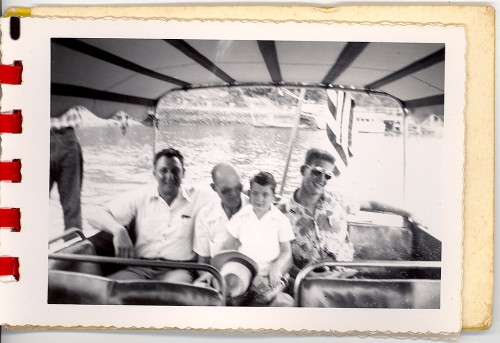 Troas “Bones” Joiner is on the left. He was the Joiner part of Steinhoff, Kirkwood and Joiner Construction. Bones was a ruddy-faced, good-hearted man who knew his way around a wrench and was artist with a bulldozer. He was a Cat skinner of the first order. His son, Bill, is on the right. I’m sitting on Dad’s lap.
Troas “Bones” Joiner is on the left. He was the Joiner part of Steinhoff, Kirkwood and Joiner Construction. Bones was a ruddy-faced, good-hearted man who knew his way around a wrench and was artist with a bulldozer. He was a Cat skinner of the first order. His son, Bill, is on the right. I’m sitting on Dad’s lap.
Bagnell Dam a boost during the Depression
The concept of a hydro electric power plant on the Osage River was first introduced by a Kansas City developer as long ago as 1912. Ralph Street managed to put together the funding to construct a dam across the Osage River and began building roads, railroads and support structures necessary to begin construction of a dam that would impound a much smaller lake than what is presently known as Lake of the Ozarks. Sometime in the mid-1920s, Street’s funding dried up and he had to abandon the idea of the first hydroelectric power plant on the Osage River.
Upon Street’s failure to deliver the power plant, Union Electric Power and Light stepped in with an engineering firm from Boston, Massachusetts, and designed and constructed Bagnell Dam in one of the most unlikely spots along the Osage River.
Many thought the $30 million project would be a disaster with the stock market crash of 1929, but it proved to be a boost to many families in the area as well as the hundreds who traveled across the country seeking work.
By today’s standards, all construction was done by hand, and the equipment used in the construction was quite primitive. The construction of Bagnell Dam was completed and Lake of the Ozarks was a full reservoir in fewer than two years.
The first of many plane rides
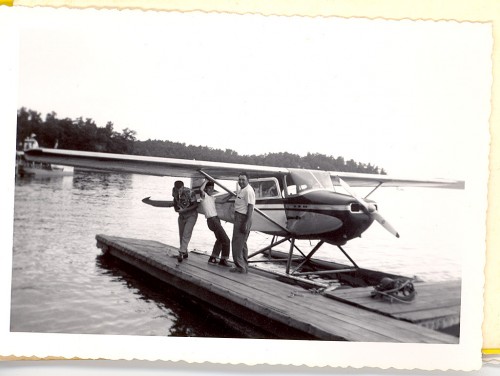 I don’t have any recollection of my first plane ride. Not only was it a small plane, it was a seaplane on top of that. I think I’ve only flown in a pontoon plane two or three times, once to the Dry Torguas and back (obviously).
I don’t have any recollection of my first plane ride. Not only was it a small plane, it was a seaplane on top of that. I think I’ve only flown in a pontoon plane two or three times, once to the Dry Torguas and back (obviously).
I’ve spent hundreds of hours in tiny aircraft and helicopters over the years. I’ve always felt more comfortable in them than in commercial airliners where you are treated like cattle. I have plenty of scary war stories about flying, but there’s something comforting about sitting next to the pilot when he says, “Oops.”
Was the dam builder superstitious?
Here’s an intriguing factoid: Construction of the dam allowed for thirteen floodgates, as the original design called for. However, only twelve floodgates were installed, and the thirteenth spillway opening is walled shut with concrete. The engineers calculated that twelve floodgates provided a large enough margin of safety. It may be apocryphal that Union Electric officials did not want to jinx the dam with the unlucky number 13.


